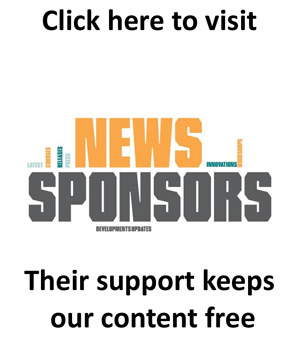In my last article (December’s edition), I talked about the fact that once Consumer Duty is implemented, ultimately the buck stops with individuals, not just the processes they follow and the structures that support them. In this article I’m going to pick up on the point about individual responsibility and explore it specifically in the context of the advice process as, for me, the advice process is on the front line of the incoming Consumer Duty (CD) regulation.
The provision of good advice is crucial to the FCA’s vision that consumers meet their financial objectives and, currently, there’s a major advice gap. An FCA survey in 2020 revealed that whilst over 15m UK adults had over £10k to invest, less than 50% had received any kind of financial advice over the previous 12 months, (with just 8% receiving regulated advice). The same research identified that despite the inflation eroding dangers of holding cash over investing, over 50% of adults were either ‘all’ or ‘mostly’ in cash. And, at the other end of the scale, 6% of first-time investors put their money into high risk investments (HRIs) with seemingly little understanding of the risks.
And at a firm level, the challenges laid down by CD means firms need to review and potentially ‘up their game’ in supporting advisers
So, whilst the case for the steadying effects of regulated advice is clear, CD poses real challenges for firms and advisers alike. CD requires advisers to play their part in providing good outcomes for their clients and help them achieve their financial goals. And a key part of this is helping their clients to avoid the foreseeable harm, e.g. holding large amounts of their investable assets in cash or HRIs. Firstly, CD ‘calls out’ the clear power imbalance between advisers and consumers when it comes to having full knowledge and understanding of the products or services in question. Secondly, there is the arguably greater challenge of behavioural economics and the biases it potentially introduces into consumers’ decision making throughout the advice process. And at a firm level, the challenges laid down by CD means firms need to review and potentially ‘up their game’ in supporting advisers to ensure the balance is struck between achieving their business objectives and complying with CD.
Although advice processes are different from firm to firm and the nature of the possible products and/or services on offer, almost all will contain a fact-find, an attitude to risk questionnaire, a recommendations or suitability letter and, for those with an ongoing relationship, a periodic review process. Let me take each in turn:
- Fact-Find: An obvious thing to say maybe, but the fact-find is the foundation stone of the advice process. In uncovering the clients’ financial circumstances and aspirations it sets the scene for everything that follows. The questions about monthly cashflow, savings, changes to potential outgoings, supporting children through education, weddings etc., are standard, but what about parents and their financial situation; for better (inheritance) or worse (long-term care) or about the likelihood of needing to support children in adulthood, e.g. house deposits, financial support through potential relationship breakdowns etc. And when talking about financial goals, in addition to questions about expected retirement date and retirement income etc., what about questions like potential career trajectory (and so earnings), security of job / employer, likelihood and financial consequences of career change or, on the plus side, new careers in later life. Of course, there will be ‘red lines’ that should not be crossed. However, I do wonder whether in the context of foreseeable harm and good outcomes, whether the traditional question sets should be extended to delve deeper into a client’s circumstances and aspirations.
- Attitude To Risk: Another foundation stone is the attitude to risk questionnaire which helps advisers identify the asset classes and associated products best suited to the risk / reward profile that consumers are comfortable with. It represents a critical piece of the fact-finding process. However, that was before Behavioural Economics (BE) came to prominence and in doing so, BE has put a completely different light on the value of a client’s responses to the questionnaire. For example, take a typical question like; “Even if I could get high returns, I would prefer not to invest my money in something that might decline in value”. If we consider that question in the context of BE, we need to consider to what extent is the person’s response to the question influenced by their aversion to loss or over-confidence? Of course, it is impossible to tell. And if aversion loss and over-confidence biases are a new language to either you and/or your firm, then Behavioural Economics and a base level understanding of its impact on the advice process should be right at the top of your Consumer Duty preparation list! So, what can advisers do to counteract the worst excesses of BE? At the most basic level they can introduce the topic of BE with their clients prior to completing the risk questionnaire. Taking things a step further, a more structured approach would be for advisers to send clients introductory, easy to read and digest information on BE. The adviser could then discuss the client’s thoughts and what biases they could relate to in their attitudes to investing and previous financial decisions. (Interestingly, several firms have exactly this type of introductory information on their websites). Taking steps like these won’t eliminate client bias, but it will certainly help the client think more clearly and so mitigate against bad decisions and avoid foreseeable harm.
- Suitability Letter: Once the adviser has analysed the fact-find, risk questionnaire and considered a range of products/services available to them, they then produce their set of recommendations. Of course, the challenge has always been about balancing the needs of the client (best advice) against any constraints within which the adviser must work, e.g. restricted advice proposition. However, CD will increase the challenge here, for example, if challenged will an adviser be able to explain (justify) their recommendations against the higher standard of delivering good customer outcomes and avoiding foreseeable harm? How many times within firms have conversations been held between advisers and advice checking teams where advice given has been challenged? Too many times from my experience, and it tends to have a very similar conversation attaching to it where the adviser is able to provide the advice checking team with additional information that is not contained either within the fact find or any associated notes. This practice MUST STOP! Firms and individuals need to find a way to ensure that every element of information and discussion that is pertinent to any advice that is given and indeed isn’t given MUST be included within the customer records. This may mean changes to fact-finds, changes to recording methods, and very likely it will need an element of educational input.
CD provides the opportunity for making the suitability letter a much broader document, taking a “whole person” view of the client. For example, given the complexity of many clients’ situations, it is often beneficial to include other specialists in the overall review process in areas that are pertinent but where your organisation does not provide support. For example, lawyers helping to set up trusts to support future generational tax implications, accountants when dealing with complex tax affairs to minimise current or potential future tax liabilities, or even later life advisers where appropriate. In these circumstances, if we consider foreseeable harm, shouldn’t advisers always be sign posting and recording the fact that other specialist advice is necessary to ensure a full and comprehensive advice service? And what about target market? The FCA have been clear about the correlation they are looking for between the target market envisaged for products vs the demographic that ultimately takes the product, how are firms and advisers going to evidence this at the 1:1 advice level?
In summary on this point, there are many firms that feel no need to change their advice processes as they believe that they are ok, but when you dig deeper, surely there is scope for improvement across all elements of the advice process? If firms think not, then I think that would be a very interesting regulatory conversation should the FCA ask a firm to explain why there was no need for any changes in their advice processes as a result of implementing CD.
- Ongoing Support: Some clients look for a one-off advice process aligned to a specific want or need and others want an adviser that provides ongoing advice and support. I understand the need to offer both services and allow the client to make the decision against what they think best fits their needs. However, this is where CD comes in again. In putting the customer’s interests first, there should at least be a discussion about the need for a review of how recommendations made in the Suitability Letter are ‘playing out’ in real life. Put another way, whilst I understand that clients may think or only want to pay for a one-off piece of advice, is allowing that really acting ‘reasonably’ (the test to be applied by the FCA) in preventing foreseeable harm? This is particularly the case given how changing circumstances may affect the effectiveness of recommendations, even creating potential vulnerability. So, whilst not taking one-off advice off the table, if clients choose one-off advice perhaps offering a reduced or even no fee ‘check-in’ some months later with the client would meet the ‘reasonableness’ test set by the regulator. And whilst a review would require an adviser to invest some of their time, it would surely be beneficial in retaining a relationship with the client, it may even lead to further new business opportunities.
If my focus so far has been on advisers, what can their firms do to support a realignment of the advice process to meet the demands of CD? Perhaps the single most important things firms can do is for firms to broaden the scope of the activities identified above. Once done, firms’ supporting processes and governance arrangements can align behind these changes for example:
- Training: An obvious place to start maybe, but advisers need support to really understand the implications of CD and BE on the advice process. Scenario based, not generic, training would really help bring the regulator’s new expectations into sharp focus. There is also an argument here for developing skills around questioning and challenge. Not order taking, but really challenging the customer to allow a full and frank fact-finding process to be undertaken to help the adviser deliver the best possible advice.
- File Reviews: In its final guidance, the FCA points to “reviewing customer files and monitoring calls to check for errors and assess if customers received good outcomes” (FG22/5: Section 11.33), as a key piece of possible data for monitoring how advisers are contributing to this. Setting flags, e.g. customer type, adviser experience and target market for product/service, will identify higher risk cases to check and a structured review of the process taken and subsequent follow up with the adviser will help guide advisers to fulfil the new, higher standard.
- T&C Records: Again, suggested in the Final Guidance, updating T&C Regimes and monitoring activities, e.g. observations and 1:1’s, to reflect the new approach and standards are key, as will be training supervisors on these changes and the new standards required. For me, CD demands that greater focus should be given to T&C supervisors and line managers on the adviser’s questioning, data assimilation and record keeping skills in producing the more detailed and wide-ranging Fact-finds and more expansive Suitability Letters discussed above.
- Complaints and RCA: Another strand of supporting advisers as they realign their behaviour to what CD requires is for firms to train complaint handlers to be aware of these changes in the advice process and be alert to related complaints. Similarly, RCA analysts should also be on the look-out for potential trends related to the advice process, (FG22/5: Section 11.33).
- Governance and Oversight: Finally, central teams should be seeking to include MI from the advice process as a key part of their CD dashboards. I say this because advice is such a key ‘touch point’ in the customer journey and is so vulnerable to poor practice.
As a result of the extensive guidance, communications and recent “Dear CEO…” letters, I hope firms have taken a step back and taken a good look at their advice processes and how they can be updated to benefit both the customer and the firm alike. Like all change, no doubt there will be some firms and advisers who are already progressed in making these changes. Some will still be figuring out how to make these changes and, as ever, there will be some who are putting their ‘heads in the sand’. I just hope this last group quickly realise the danger they are putting both their advisers, their clients and themselves in and focus on the required change of approach that CD brings.






